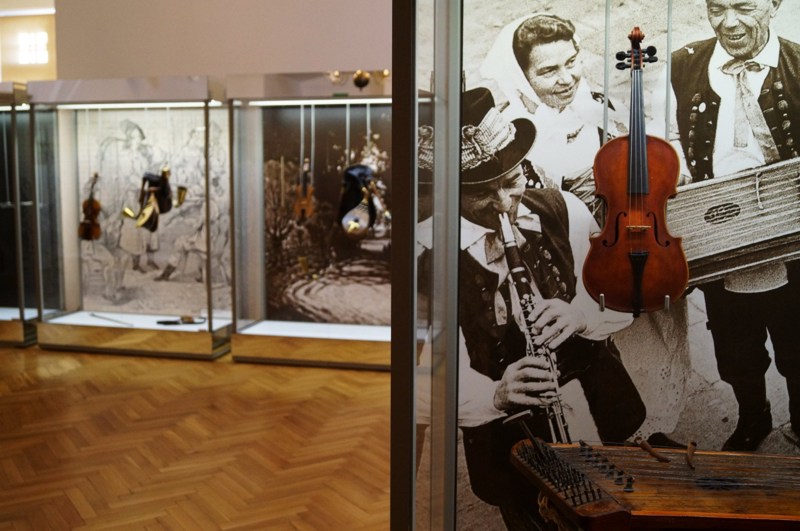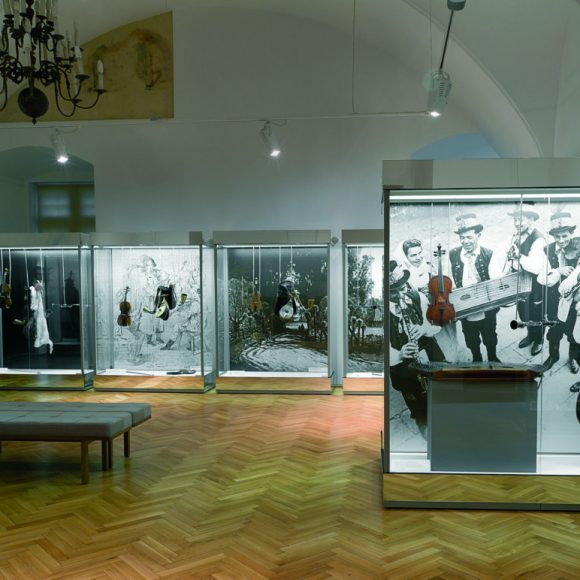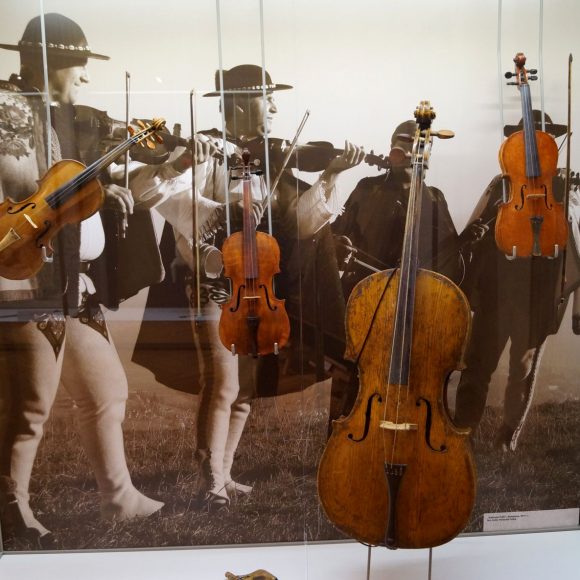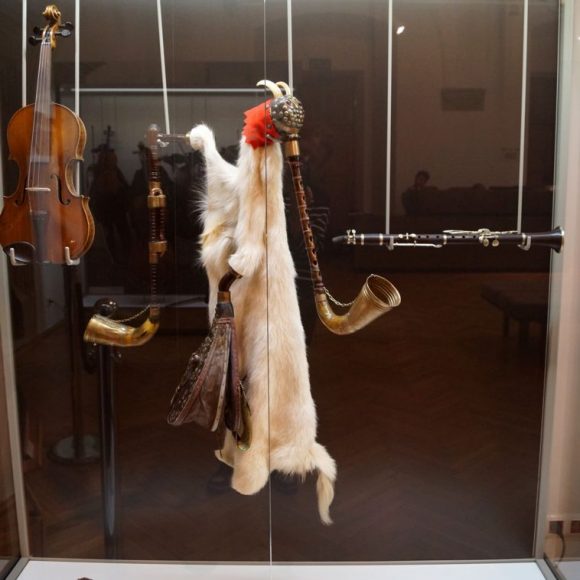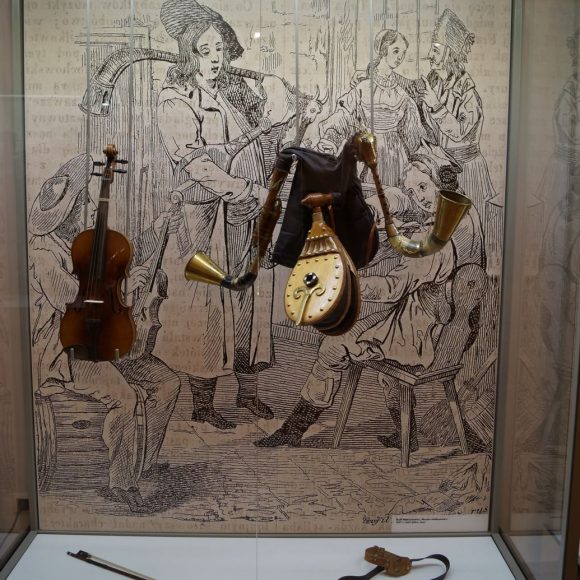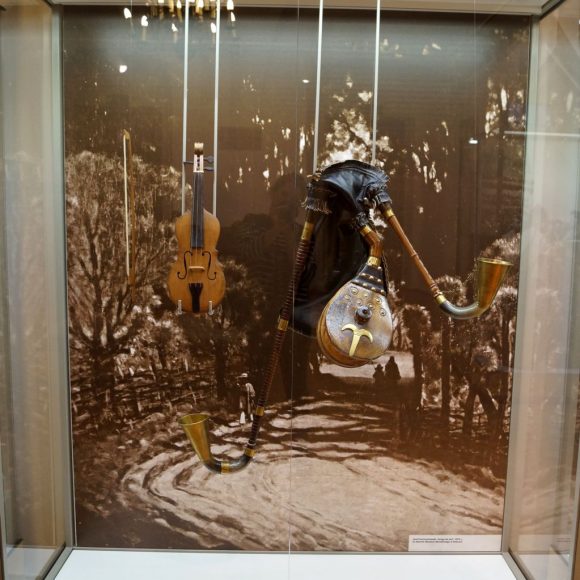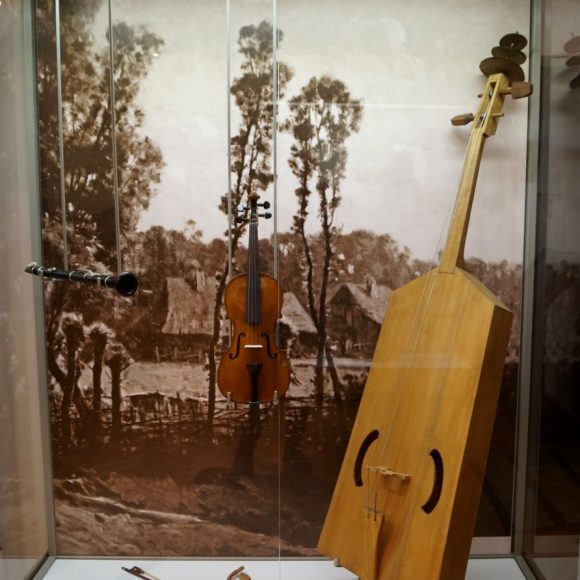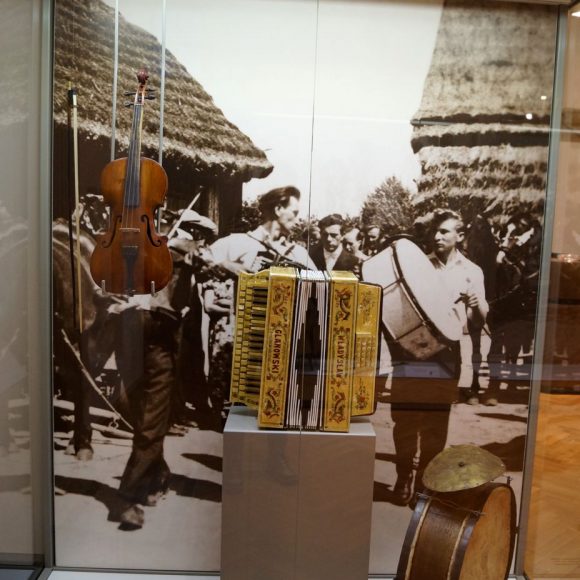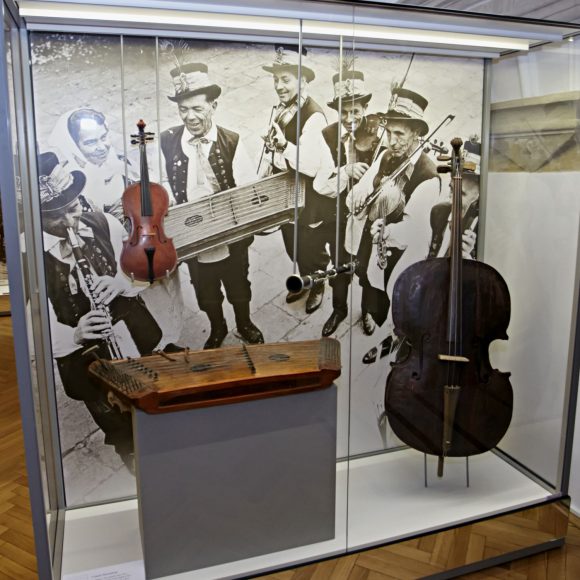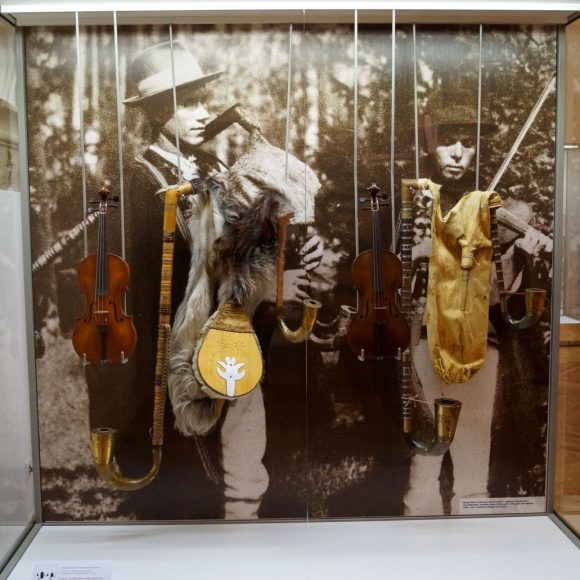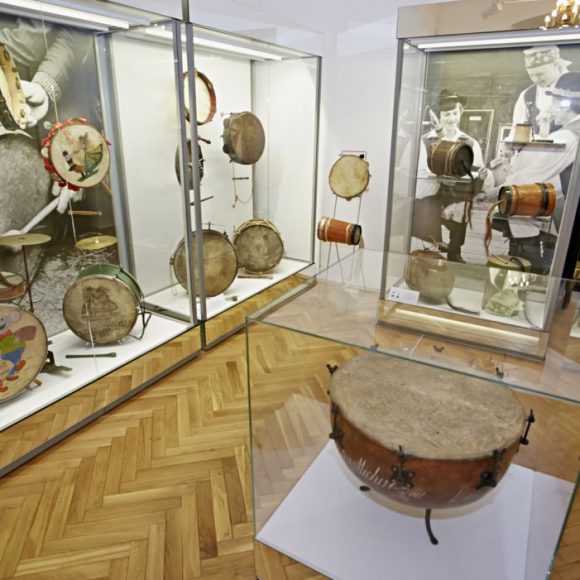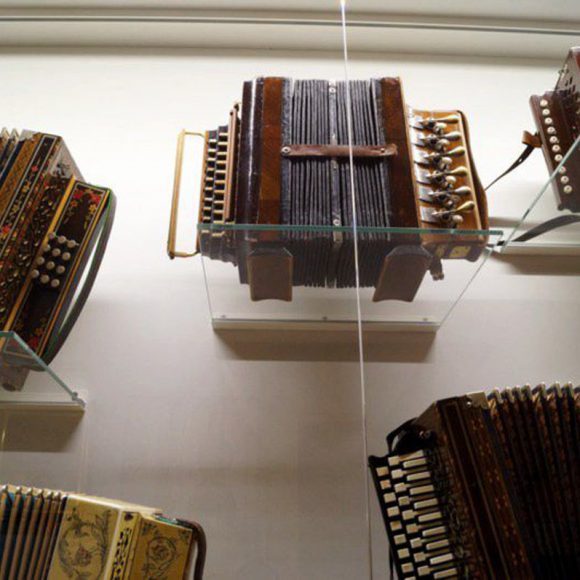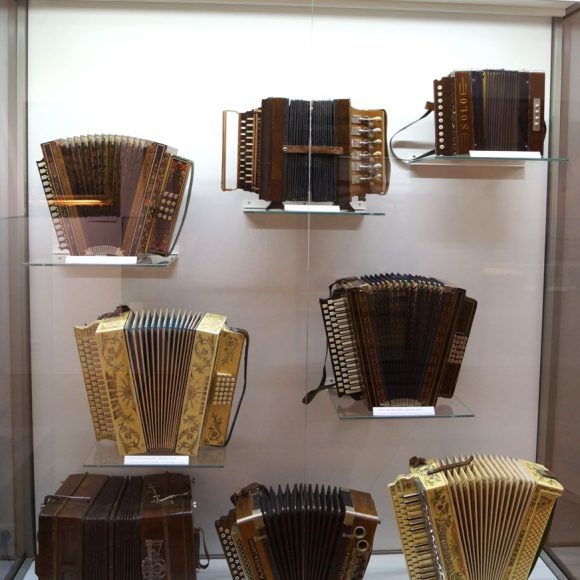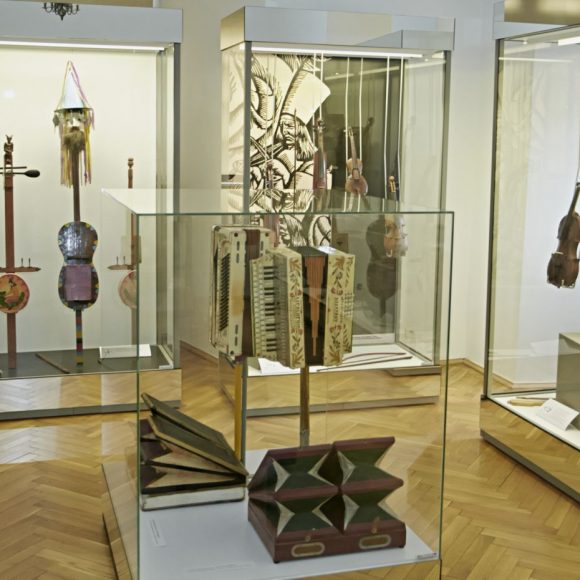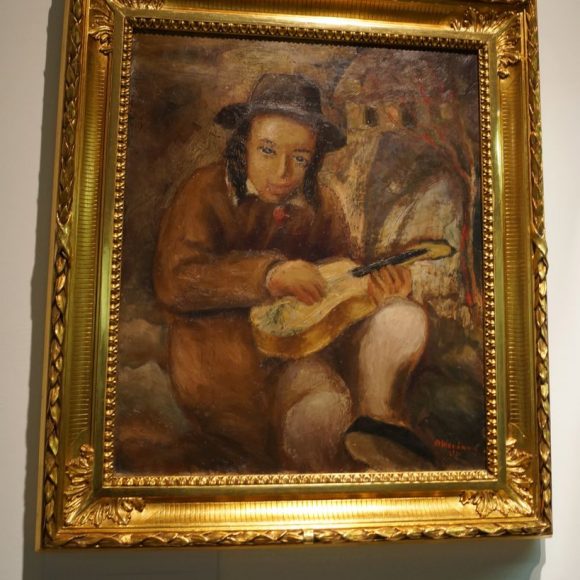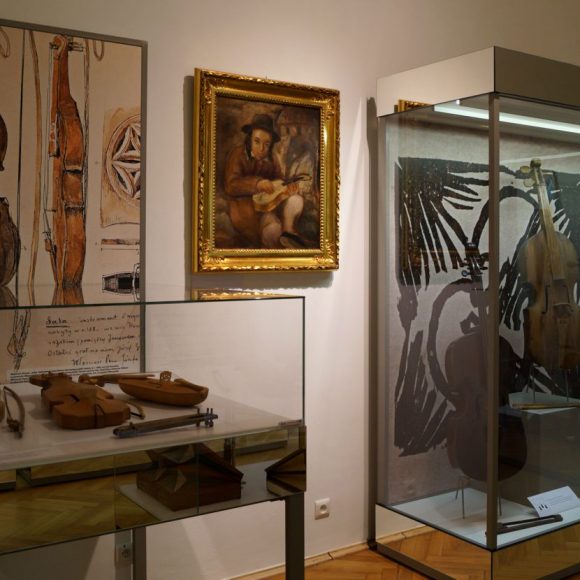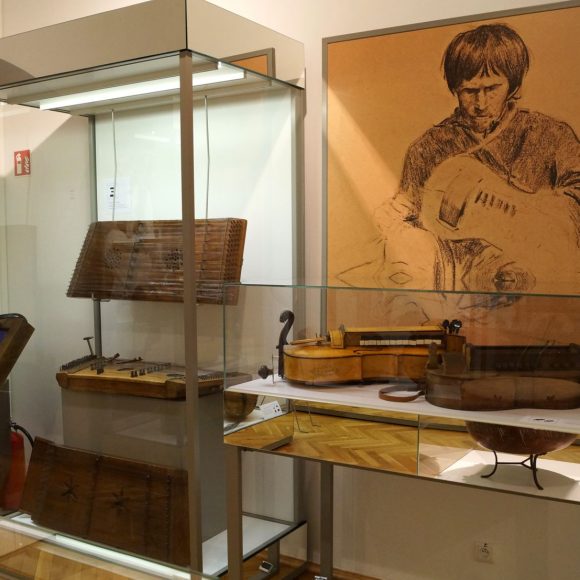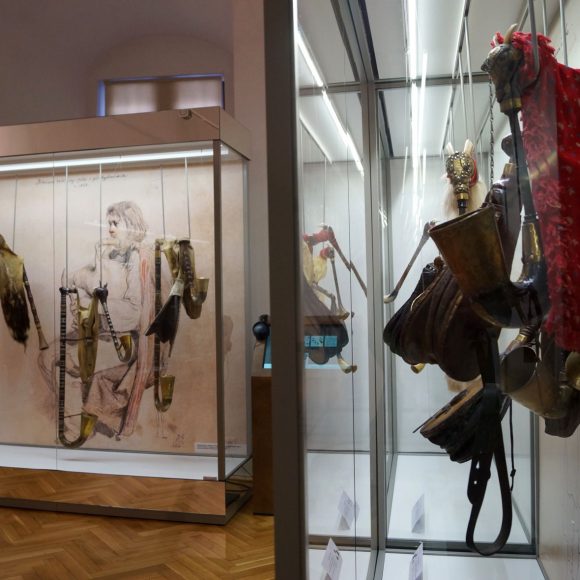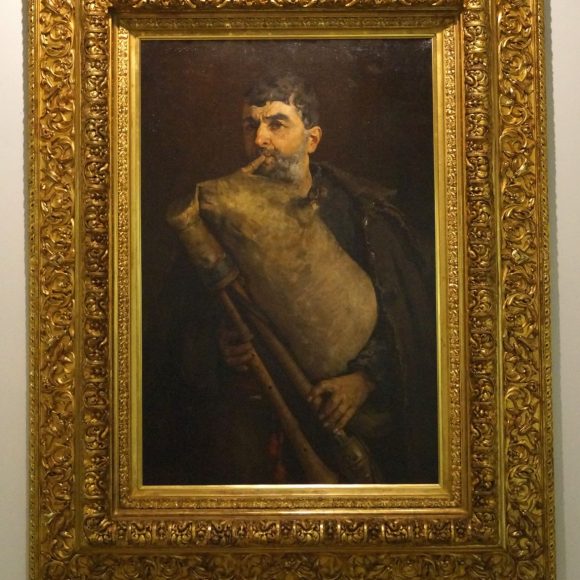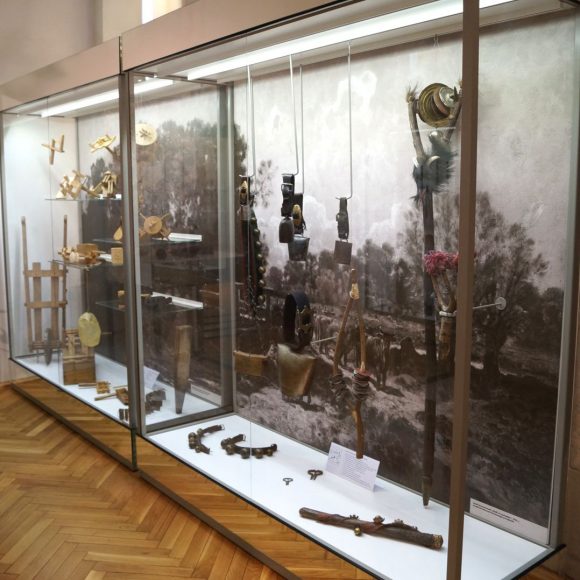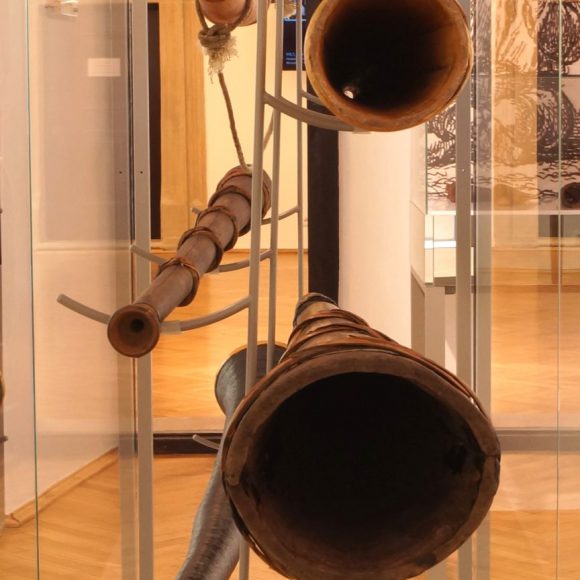The originality of these musical objects, their “spiritual nature”, the beauty of form and detail, born out of the creativity of folk artists, combined with the presentation of sound and the function they performed in the folk culture, in their everyday life, rituals, combined with performance practice and the changes occurring in it – these are the main assumptions of the permanent exhibition entitled Instruments… — see and hear the tradition in the Museum of Folk Musical Instruments in Szydłowiec.
This exhibition shows Polish folk instruments in an interdisciplinary entourage of original paintings and photograms presenting drawings, graphics, archival photographs documenting the instruments in iconography and presenting it as an artist’s inspiration. The instruments are presented in two segments: presented in four basic groups: idiophones, membranophones, chordophones, aerophones — the Hornbostel-Sachs classification, which has been accepted for a number of years, as well as in the structure of ensembles representing the most characteristic regions; these are a selection from the most numerous collection of Polish folk instruments held by the museum in Szydłowiec.
The permanent exhibition — brought to life through imagination, art, multimedia, arranged according to the above-mentioned instrumentological classification and resulting from performance practice — is an intriguing library of instruments or “instrumentotheque” in which the presented musical object attracts attention with its originality of form, charms with the clumsy ugliness resulting from the artist’s ineptitude. Arousing the interest of the visitor, it “triggers” the need to get to become familiar with the instrument in a wider context, leads to a path of information available through multimedia and through touch it opens the instrument’s “hidden world”, which is additionally illustrated by iconography on screens and panels, providing information about the instrument’s construction, history and function. It answers a number of questions, e.g.: Why didn’t folk musicians buy new, factory-made instruments? What’s a “hand-chiseled violin”? Why did the squeezebox reconfigure the lineup of a folk band? Is kobza the same as bagpipes?
Through the instrument, the Szydłowiec exhibition introduces the visitor to the world of past musical culture of the “peasants” of the 19th and the 1st half of the 20th century, whose lives were filled with hard work and struggle to satisfy life’s basic needs. They did have a natural need to meet, to spend time together. Work, cultivating religious rituals, joy and sadness of everyday life have developed the need to have contact with music from the dawn of time. It “incubated” the music of the people, which was passed down from generation to generation by “ear”, i.e. without the use of musical notation. This need for contact with music pushed the development of talents of performers and instrument builders.
Today, these instruments are modest but extremely expressive witnesses of culture, as the product of the human handcraft they become a mine of information about the life of the individual who produced them, but also about the life of the people (K. Moszyński, Kultura ludowa Słowian, Warsaw 1968).
Aneta Oborny, PhD
Director of the Museum of Folk Musical Instruments
Curator of the exhibition
The Radziwiłł antechamber – Hall of Folk Bands
Crossing the museum’s thresholds, the visitor enters the Radziwiłł antechamber, which features 8 stands with instruments “forming” lineups of folk bands from the most important Polish ethnographic regions. The first presented is the Band from Beskid Śląski and Beskid Żywiecki, which stands close the Band from Podhale. Then, moving clockwise, the instrumental traditions of the Wielkopolska region are shown, cultivated during ceremonies and important moments of people’s lives. The presented bands and instruments include: Band from Wielkopolska with a kozioł biały (or kozioł weselny), Band from Wielkopolska with a kozioł czarny (or kozioł ślubny) and mazanki and Band from Wielkopolska with bagpipes. The Band from Szamotuły is located in the immediate vicinity. Moving further to the center of Poland, we see one of the most typical band, functioning since the beginning of the twentieth century, a Band from the Northern Małopolska (the Radom region), and the last position is taken by a band functioning in the south-eastern part of Poland — Band from Rzeszów.
The 1st Radziwiłł chamber
Membranophones are presented in this hall, including: rubbed instruments from Kashubia and Chełmno Land: burczybas, and struck instruments: drum as a ritual and historical instrument, as well as single- and two-membrane drums still used in folk bands all over Poland.
Then there is a rich collection of squeezeboxes — instruments from the group of wind idiophones with metal pass-through reeds as their sound source. Further on, the exhibition includes string chordophones: violins, mazanki, złóbcoki and basy, made by Polish folk artists based on the forms of professionally-made instrument, as well as simple “primitive” examples of instruments for children.
The exhibition also presents struck chordophones: Kashubian and Kurpian devil’s violins (diabelskie skrzypce), as well as the Rzeszów and Vilnius cimbalom, which are common in the south and north-east of Poland.
The next position is devoted to “reconstructed” instruments, which were built by professional luthiers as copies of the original preserved complete instruments, such as: the oktawka, originating from archaeological excavations: 16th century Płock fiddle, 10th/11th century Opole gusle and the 13th century Gdańsk gusle, or instruments reconstructed on the basis of references in available literature from the end of 19th century. — an example is a suka built according to an 1895 drawing by Wojciech Gerson and an 1888 drawing by Tadeusz Dowgird.
The exhibition also features rubbed chordophones — here the function of a bow is performed by a wheel, set in motion with a crank, and the notes are selected on strings by means of keys, to which the so-called tangents are attached. An example of such instruments is the hurdy-gurdy.
The 2nd Radziwiłł chamber
Aerophones are presented in this hall: monophonic sierszeńki and polyphonic Wielkopolska bagpipes, biały kozioł (or weselny kozioł) and czarny kozioł (or ślubny kozioł) and Żywiec bagpipes, Silesian gajda and Podhale bagpipes. The exhibition of these instruments is enriched by an original painting by Panateon Szyndler (1846-1905) entitled “Kobziarz” (Eng. The Bagpiper) from 1879 (owned by the National Museum in Cracow), shown at the First Polish Musical Exhibition in Warsaw in 1888.
The next part of the exhibition presents idiophones (instruments that produce sounds without the use of strings or membranes) of various types and sizes, made of wood, metal and leather, grouped according to the method of producing sound. Another important and interesting element of the exhibition are smaller size and various forms of aerophones, such as pipes, whistles, ocarinas, shepherd’s horn or double reedpipe. The non-free aerophones, which can be seen at the exhibition, also include folk signaling and shepherding instruments, found in Podlasie, Kurpie, Mazovia, Pomerania, the Beskids and Podhale: wooden folk horns, such as ligawas and bazunas, trombitas, shepherd’s horns.
Museum’s Collection
The museum has almost 2,500 ethnographic and historical-artistic items in its collection. This collection is unmatched nation-wide in terms of size and originality. It is made up of Polish folk instruments and musical tools, made by both folk artists and professionals, German, Austrian, Czech, Italian, French or Russian instruments, instruments that were formerly used by rural musicians, as well as reconstructions of instruments that are known only from the source material.
The collection also includes luthier and carpentry tools as well as furniture from the luthier workshop of the famous Lublin violinmaker Franciszek “Borówka” Borowiecki and the folk violinmaker from Skarżysko-Kamienna — Jan Rafalski. In 1969, as ordered by the then Director of the Museum — Danuta Słomińska-Paprocka, Jan Rafalski made a set showcasing the stages of construction of the hand-chiseled instruments — violin and basy. The Museum also received complete, finished instruments of his work — violin, basy and drums. In 2014 the Museum expanded its collection with a set of Polish and Balkan folk instruments and sculptures, collected by Polish ethnomusicologists Jadwiga and Marian Sobieski.



